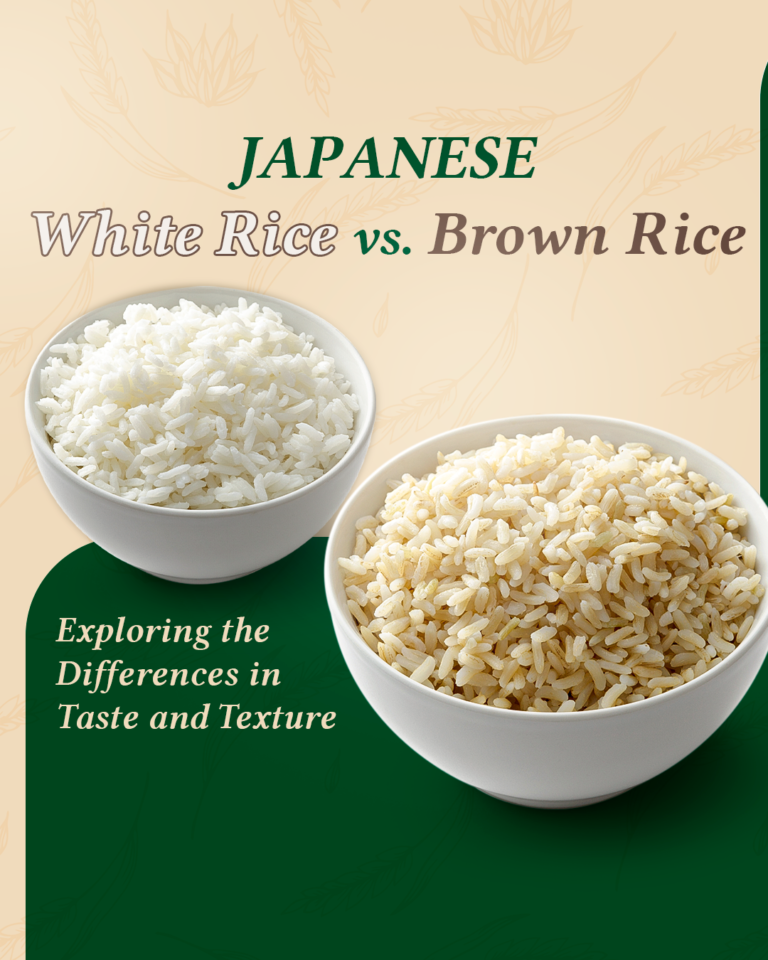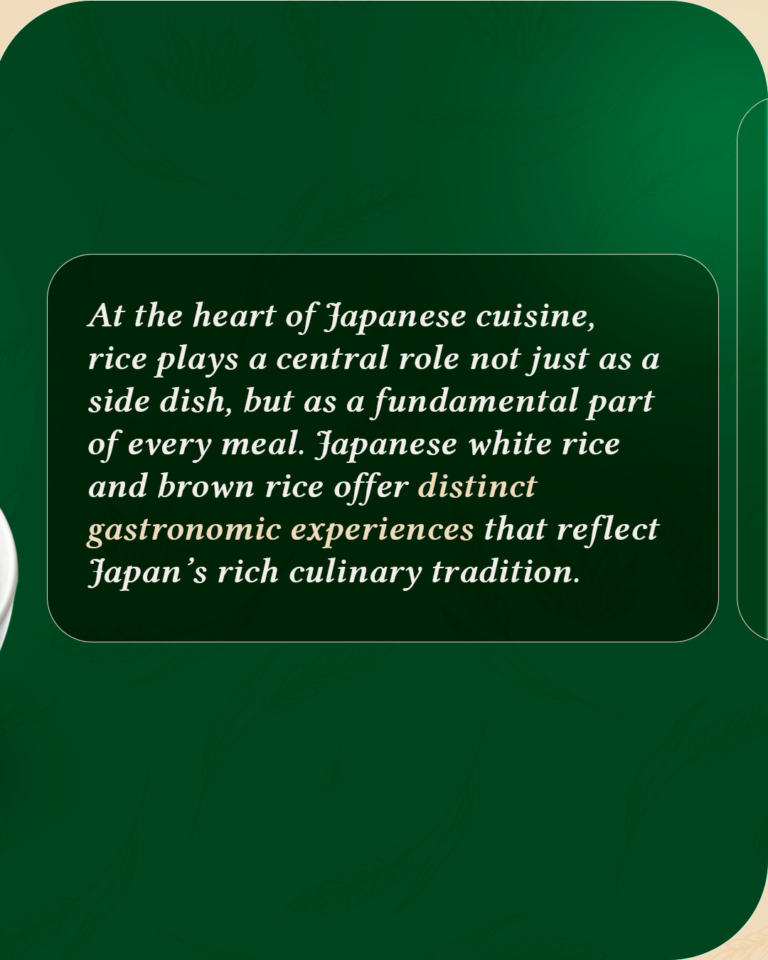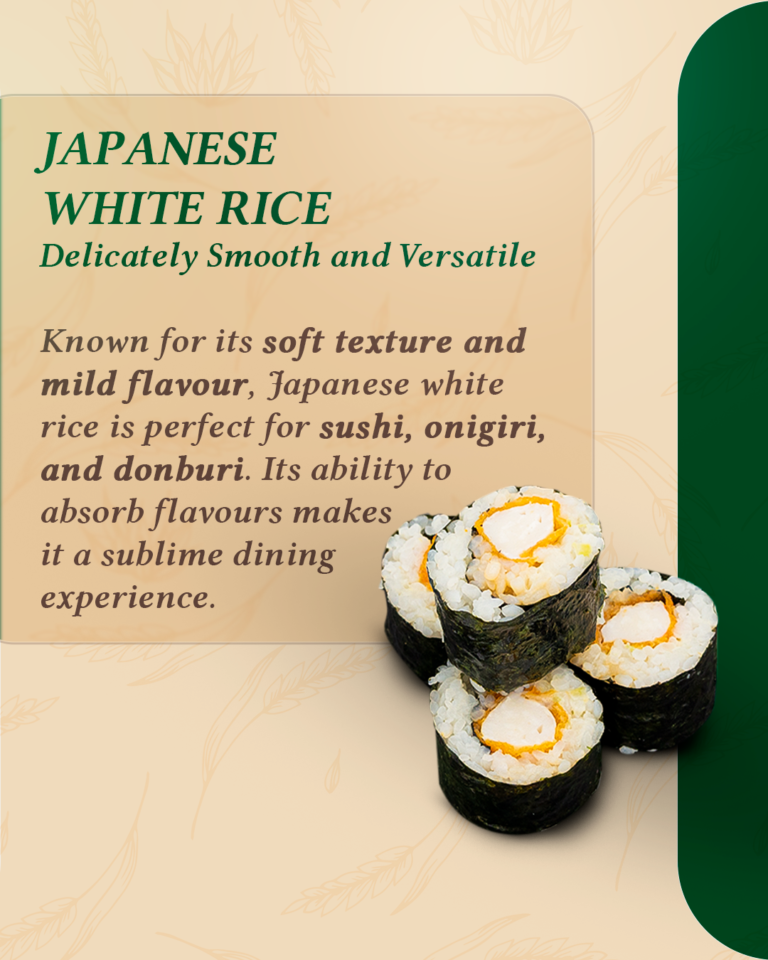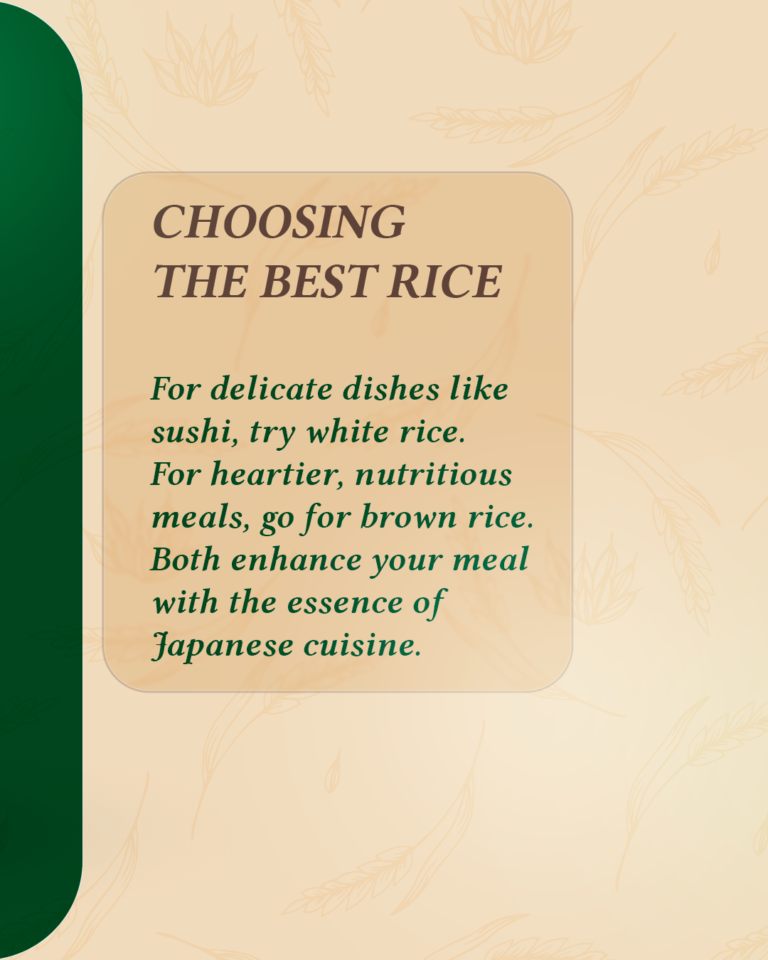Japanese White Rice vs. Brown Rice
Exploring the Differences in Taste and Texture
At the heart of Japanese cuisine, rice plays a central role not just as a side dish, but as a fundamental part of every meal. Japanese white rice and brown rice, while similar in origin, offer distinct gastronomic experiences that reflect Japan’s rich culinary radition.
Japanese White Rice: Delicately Smooth and Versatile
Known for its soft texture and mild flavour, Japanese white rice is a popular choice in various culinary preparations.
Each grain is meticulously cultivated and polished to achieve exceptional quality, ideal for dishes like sushi, onigiri, and donburi. Its ability to absorb flavours and aromas makes it a perfect complement to a variety of Japanese dishes, offering a sublime dining experience that goes beyond mere sustenance.
Japanese Brown Rice: Nutritious and Flavourful
On the other hand, Japanese brown rice, also known as genmai, retains its outer layer of bran, resulting in a more nutritious grain rich in fibre. This rice offers a firmer texture and earthy flavour that complements heartier and healthier dishes. Besides being an excellent source of essential nutrients like B vitamins and minerals, brown rice is valued for its satiating qualities and contribution to a balanced diet.
Choosing the Best Rice for Every Occasion
Whether preparing delicate sushi or a comforting donburi bowl, the choice between Japanese white rice and brown
rice depends on the desired flavour profile and nutritional needs. Both rice types capture the essence of Japanese
cuisine, offering a window into the country’s culture and culinary tradition.
Conclusion
Japanese white rice and brown rice are essential staples of Japanese gastronomy, each bringing unique characteristics that enhance any meal. By exploring these rice varieties, you not only experience exceptional flavours but also embark on a journey of cultural and culinary discovery. Try both and discover how these humble grains can transform your dining experience.







